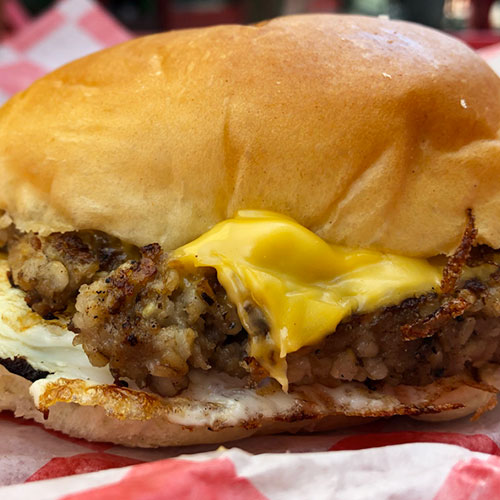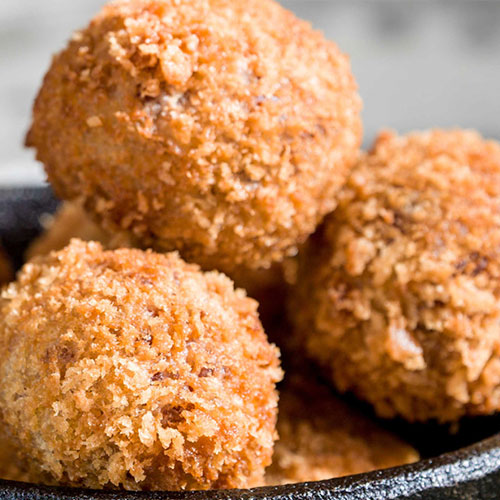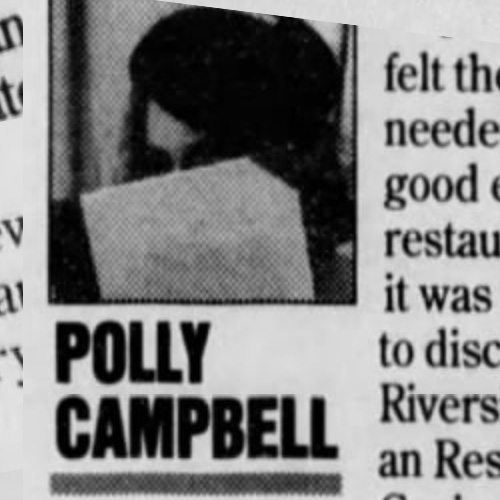I am not a Midwesterner by birth. I moved here with my family—to Cincinnati, from my native New England—when I was nine years old. I noticed differences immediately. Soda was “pop.” People called bubblers “water fountains.” Chili parlors were more popular than pizza parlors. Everything came with banana peppers, and no one said “wicked.”
We arrived here in the summer of 1979, and though it took us a while to get to know our neighbors, by the following summer, we started getting invitations to neighborhood cookouts. It was at these backyard events that I noticed the biggest difference of all. It happened while I was standing by a neighbor’s grill and I noticed, a little panicked, that, instead of hot dogs and hamburgers, the Weber was festooned with stubby white links and links that looked sort of like hotdogs but bigger, redder, and fatter. “Brat or mett?” the grillmeister asked with a bun in his hand, and I immediately replied “brat,” the only reason being that the brats looked smaller, requiring less commitment.
It wasn’t as bland as I thought it would be. It tasted more adult than a hot dog, actually, though I put ketchup on it instead of the expected spicy mustard and sauerkraut. It was porky and mildly spicy, though my palate couldn’t identify what those spices were. (I know now: salt, white pepper, nutmeg, sugar, onion powder, and parsley.) When I bit into it, the fat that squirted out burnt my chin. I don’t remember if I tried a mett that day, but I do remember that disliking metts immensely when I was a kid. They were too spicy, too sausage-y, too mustardy. If I managed to chew my way through even half a mett at a cookout, I would feel nauseous. Like, “Mom, I think I’m going to go home and lie down” nauseous.
I’m going to flash forward from 1980 now. I’m going to skip over the forty years when I didn’t really think about brats and metts anymore, the years when I lived in New Orleans and had my real sausage awakening after falling hard for the andouille that studded my first plates of gumbo and red beans and rice, the sixteen years I spent in New York, where I fell in love with the fresh kielbasa in Greenpoint and the Italian sweet sausages from Pastosa’s in Bensonhurst.
Now it’s 2019, and after twenty years away, I have just moved back to Cincinnati with my wife and young daughter. I am in front of the Avril-Bleh butcher shop on Court Street on a summer afternoon by an open grill, eating a brat. Realizing that I missed my city’s sausages more than I ever could have imagined. That this is uniquely Cincinnati.
“Brat or mett?” the grillmeister asked with a bun in his hand, and I immediately replied “brat,” the only reason being that the brats looked smaller, requiring less commitment.
Before Wisconsin freaks out, please know that I am aware of your own particular love of brats. I know that yours are different than ours—that yours are ground more coarsely, and that yours are often split and served on a special bun, most notably at tailgate parties before Brewers games. I know about the Wisconsin hot tub, the aluminum tray in which the brats are soaked in beer. It sounds delicious, and I can’t wait to try one sometime. The reason I know all of that is because, since moving back to Cincinnati, I’ve made friends with Len Bleh, who knows everything about sausage. He owns the Avril-Bleh Meat Market & Deli, run by the same family since 1894.
The history of brats and metts in Cincinnati likely goes back even further, to the 1840s, when an influx of German immigrants came to the city, nearly doubling its population. For them, sausages were fast food. German-owned taverns and beer gardens sold them alongside frothy lagers and bocks, and German butcher shops sprang up all over the city, especially the Over-the-Rhine neighborhood, where most of the newly arrived immigrants concentrated.
Bleh told me that the major difference between the famous Wisconsin brat—sometimes called the Sheboygan brat—and the Cincinnati brat is that ours are emulsified through a bowl chopper, sort of like a hot dog, and the Sheboygan brat isn’t. Bleh stuffs the pork for his brats into casings, links them together, and dips them into a 175-degree kettle of water for about a half hour, which turns them from pink to their signature white.
Now, let’s go back to metts. Like brats, metts are available fresh or smoked. They are usually seasoned with salt, white pepper, and mustard seed. The Cincinnati mett is also, if Bleh’s sales receipts are any indication, far more popular here than the brat. It’s like the German mettwurst, only ours are usually smoked and Germany’s are raw. According to food historian Dann Woellert, the most popular kinds of metts here are the classic Cincinnati mett, which is smoked and then grilled, and the mild and hot versions of the Hamilton mett, which comes in natural casings or skinless, like a hot dog.
Woellert cites a 1960 Cincinnati Enquirer article to explain the Hamilton mett’s origins: “In old Bavaria, Hamilton Mett is known as ‘hamlet mett,’ because this sausage was produced in the pork butcher shops in the small town hamlets. Thus to people in larger towns or cities it was ‘hamlet mettwurst’ or perhaps ‘country sausage.’ When hamlet mettwurst was popularized in the Hamilton County [where Cincinnati is located] area by early German families, name confusion resulted and the sausage soon became ‘Hamilton’ mett.”
You can add take brats and metts beyond the grill, adding them to stir fries, casseroles, and pasta. Bleh tells me that his mother used to make her own sausage while he was growing up and bake it into a sauerkraut casserole, or mix it with homemade egg noodles and top the bake with the tomatoes she’d canned the previous summer.
I should note that I’ve started to like metts since I moved back here. The breakthrough moment happened last year, when my wife and I took our four-year-old daughter to a Reds game and I grabbed one from a vendor—made locally, of course, by Queen City Sausage. It was around 90 degrees outside, and, remembering the pleasures of really fiery food on really hot days back in New Orleans, I plied it with plenty of spicy mustard. The Reds were (appropriately) playing the New York Mets, and as I sat in my seat, and took a bite, I looked out at Joey Votto on first base, and realized that I was taking part in something that’s uniquely a part of this region. Something that’s special about Cincinnati. I wanted to share in this tradition with my daughter, but she’s still in the chicken tender years of her life, and, given how long I took to appreciate the beauty of savoring a brat or mett on a hot Cincinnati afternoon, I understood.




